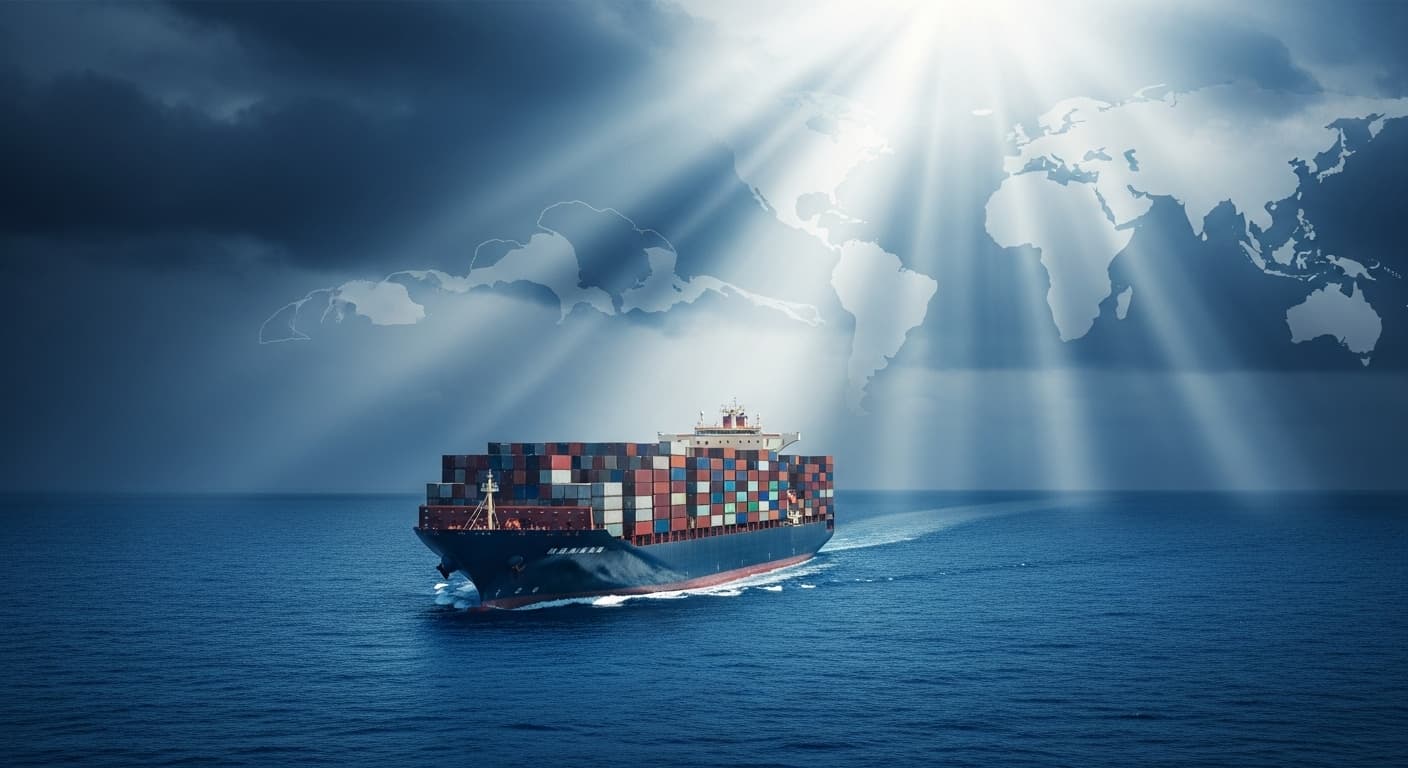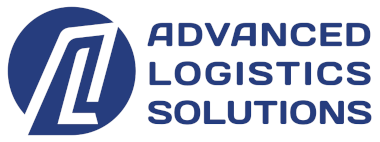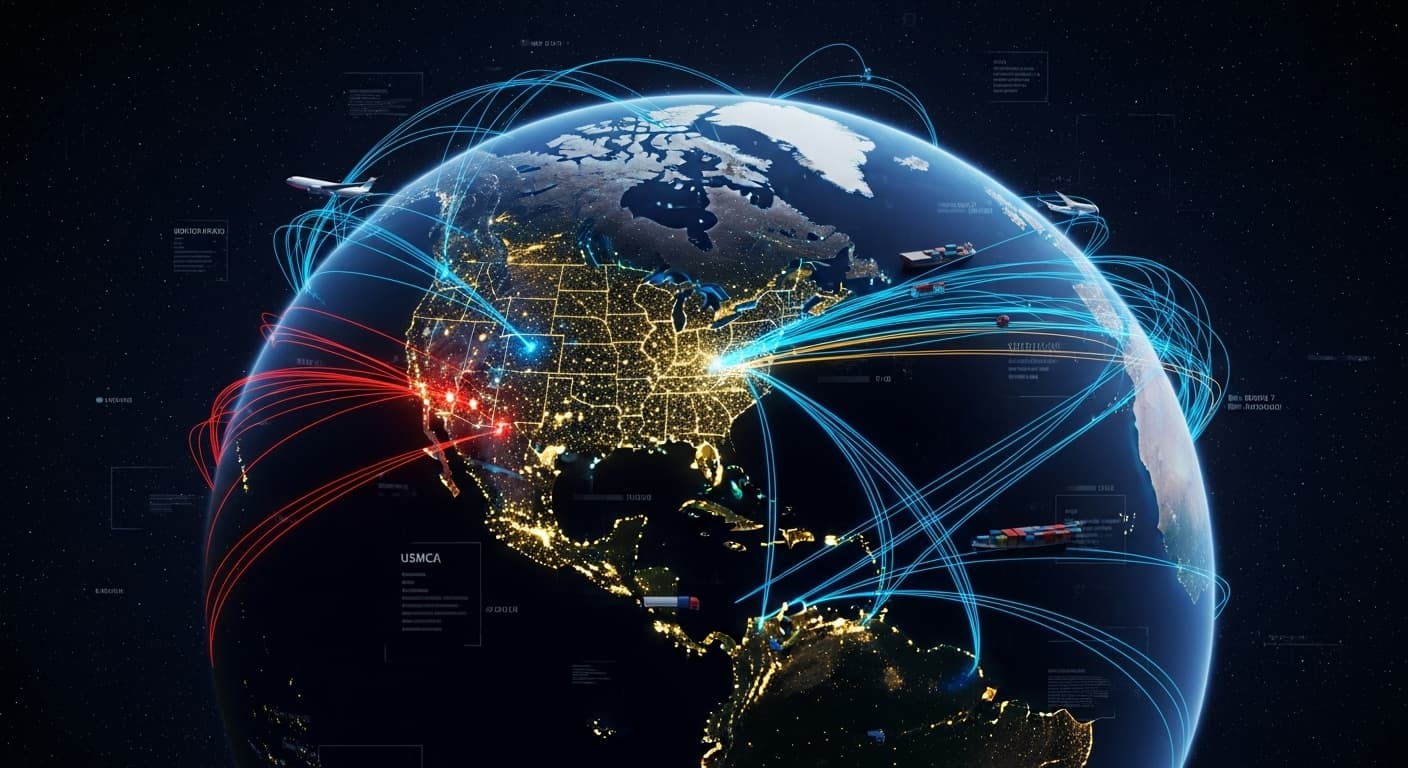
Executive Summary
October 14, 2025, marks a significant escalation in US-China trade tensions with the implementation of reciprocal port fees and comprehensive tariffs targeting shipping, logistics, and shipbuilding industries. These measures introduce new cost structures affecting billions of dollars in Trans-Pacific trade, accelerating supply chain diversification trends and creating both challenges and opportunities for logistics professionals worldwide.
Understanding New US-China Trade Measures: A Strategic Guide for Logistics Professionals
(美中贸易措施的理解: 物流专业人士的战略指南)
1 · The New Trade Policy Landscape
The simultaneous implementation of US tariffs on Chinese shipping entities and China’s retaliatory port fees represents the most significant escalation in maritime trade policy since the initial trade war began in 2018. These measures fundamentally alter competitive dynamics across Pacific trade routes and reshape the economics of international commerce.
Understanding the US Tariff Framework
Comprehensive Targeting of China’s Shipping Dominance: The United States government has implemented a multi-layered tariff structure designed to address what officials characterize as China’s unfair competitive advantages in global maritime commerce, stemming from a USTR investigation that found China leveraged subsidies and other practices to dominate global shipping and shipbuilding.
Vessel-Based Fee Structure (Effective October 14, 2025):
| Vessel Category | Fee Structure | Annual Cap | Strategic Intent |
|---|---|---|---|
| Chinese-owned/operated vessels | $80 per net ton per voyage | 5 voyages maximum | Direct cost increase on Chinese fleet |
| Non-Chinese operators | Greater of $23/ton or $154/TEU | Per voyage | Discourage use of Chinese-built vessels |
| Ro-ro vehicle carriers | $14 per net ton | Per voyage | Automotive supply chain impact |
Escalation Timeline: These fees will increase systematically by $5 per ton annually through April 2028, creating predictable but substantial cost increases over time. The escalation schedule signals long-term policy commitment rather than temporary trade negotiation leverage.
Broader Industry Tariffs: Beyond vessel fees, the US has implemented comprehensive tariffs reaching up to 100% on shipbuilding components, maritime logistics equipment, and shipping-related services—reflecting a comprehensive approach to reshaping the maritime industry landscape.
China’s Retaliatory Port Fee Structure
Reciprocal Measures Targeting US Maritime Interests: China’s Ministry of Transport announced mirror measures designed to impose equivalent costs on US-linked vessels calling at Chinese ports, demonstrating the tit-for-tat nature of the escalating trade conflict.
Vessel Classification Criteria: China defines US-linked vessels broadly to maximize policy impact, including US-flagged vessels, US-built vessels, vessels owned by American companies or individuals, and any vessel with 25% or greater US ownership or control.
Fee Structure and Escalation:
| Implementation Period | Fee per Net Ton | Percentage Increase |
|---|---|---|
| October 2025 - April 2026 | 400 yuan (~$56 USD) | Baseline |
| April 2026 - April 2027 | 640 yuan (~$90 USD) | +60% |
| April 2027 - April 2028 | 880 yuan (~$124 USD) | +120% |
| April 2028+ | 1,120 yuan (~$157 USD) | +180% |
Application Rules: Fees apply once per voyage at the first Chinese port call, with a maximum of five charges per vessel annually. This structure creates predictable costs while maintaining administrative efficiency for both carriers and Chinese authorities.
2 · Impact on Ocean Carriers and Current Market Dynamics
The new fee structures create complex financial pressures on ocean carriers, though current market conditions are temporarily moderating the immediate impact on shippers.
Carrier-Specific Impact and Response Strategies
Major US-Linked Carriers: American carriers face direct exposure to Chinese retaliatory measures. Matson Navigation has announced no immediate service changes or surcharges, choosing to absorb costs to maintain market share. APL (American President Lines), as part of the French CMA CGM group but operating US-flagged vessels, faces significant exposure on China routes. Maersk Line Limited, which handles US government cargo, benefits from less competitive pressure on government contracts but must evaluate commercial service economics carefully.
Chinese Carriers’ Strategic Response: Major Chinese carriers including COSCO Shipping and OOCL have indicated they will absorb US port fees without customer surcharges, likely supported by government subsidies. This strategy uses cost absorption as a competitive advantage, prioritizing market share over immediate profitability while building customer loyalty through stable pricing.
Market Dynamics Providing Temporary Relief
Current Rate Environment: Despite new fees, Trans-Pacific spot rates are falling due to significant new vessel capacity entering the market and post-peak season volume reductions. This downward rate pressure temporarily offsets fee increases, though industry experts caution that current conditions may not persist long-term.
The Uncertainty Factor: One significant challenge is the lack of clarity around what constitutes a “Chinese-linked” vessel, particularly concerning ship financing structures. This ambiguity creates operational uncertainty for carriers and complicates long-term planning for logistics providers and their customers.
3 · Supply Chain Diversification and Strategic Adaptation
Beyond immediate cost impacts, these trade measures accelerate fundamental shifts in global supply chain strategy and logistics network design.
The Evolution of “China Plus One” Strategy
Geographic Diversification Trends: Trade tensions have transformed supply chain diversification from strategic option to operational necessity, with companies increasingly developing manufacturing and sourcing capabilities outside China.
Southeast Asian Manufacturing Growth:
Vietnam’s Emergence: Vietnam has experienced rapid growth in electronics, textiles, and footwear production, supported by significant investment in ports and transportation networks. The country benefits from CPTPP membership and other favorable trade frameworks while offering lower labor costs and an improving skill base.
Thailand’s Industrial Strength: Thailand maintains a strong automotive and component manufacturing base alongside growing electronics manufacturing operations. The country’s well-developed transportation infrastructure and strategic location provide excellent ASEAN market access.
Malaysia’s Strategic Position: Malaysia offers sophisticated semiconductor and electronics production capabilities, world-class port facilities, and a favorable business environment. The country’s comprehensive network of trade agreements enhances its attractiveness for multinational operations.
India’s Manufacturing Renaissance: India’s “Make in India” initiative combines government support with a large domestic market and growing middle class. The country’s traditional strength in IT services is expanding into hardware manufacturing, supported by major infrastructure investments in ports, roads, and logistics networks.
Mexico’s Nearshoring Advantage: Mexico offers geographic proximity reducing transit times and transportation costs to US markets, preferential trade treatment under USMCA, and established industries in automotive, aerospace, and electronics. Shared time zones and cultural ties provide additional operational advantages.
Logistics Network Redesign Considerations
Balancing Multiple Objectives: Modern supply chains require sophisticated approaches balancing cost, risk, service, and flexibility across multiple dimensions.
Risk Diversification Framework: Effective strategies include geographic spread across multiple production locations, supplier diversity avoiding over-dependence on individual suppliers or regions, multiple transportation routing and carrier options, and strategic inventory positioning supporting operational flexibility.
Cost Optimization Approaches: Total landed cost analysis provides comprehensive evaluation beyond simple unit price comparisons. Transportation mode selection optimizes the balance of cost, speed, and reliability. Duty and tariff planning employs strategic approaches minimizing tariff exposure while maintaining supply chain efficiency.
Port and Route Selection Strategy: West Coast ports offer shorter ocean transit from Asia but face periodic congestion and labor considerations. East Coast ports via Panama Canal involve longer ocean voyages but provide proximity to Eastern markets and Midwest access via rail. Gulf Coast ports represent growing capacity with less congestion and efficient southern market access.
4 · Industry Sector Implications
Different industry sectors face unique challenges and opportunities from the evolving trade policy environment.
Electronics and Technology Sector
Complex Supply Chain Challenges: Electronics supply chains face particular vulnerability due to complexity and China dependence. The sector’s heavy reliance on Chinese component manufacturing, critical semiconductor supply chains, and complex assembly operations creates significant exposure to trade disruptions.
Strategic Response Options: Companies are developing dual sourcing strategies, implementing strategic inventory buffers, designing products with supply chain flexibility in mind, and selectively transferring technology and production to alternative locations. The balance between cost, quality, and supply chain resilience becomes increasingly critical.
Automotive Industry Dynamics
Just-in-Time Vulnerability: The automotive industry’s efficiency-focused just-in-time manufacturing creates vulnerability to supply chain disruptions. Significant Chinese component sourcing, complex multi-tier supplier networks, stringent quality requirements, and substantial tooling investments complicate rapid supplier changes.
Adaptation Approaches: The industry is pursuing nearshoring initiatives, investing in alternative supplier capabilities, implementing selective inventory increases for critical components, and strengthening relationships with carriers and freight forwarders capable of managing complex automotive logistics.
Retail and Consumer Goods
Price Sensitivity Pressures: Consumer goods companies face direct pressure from cost increases in highly competitive, price-sensitive markets. The combination of increased shipping costs, port fees, and tariff exposure creates margin pressure that is difficult to pass to consumers.
Strategic Alternatives: Retailers are developing non-China sourcing options, optimizing product mix based on tariff impacts, increasing private label offerings that provide greater supply chain control, and selectively increasing domestic sourcing where economically viable.
Industrial and Manufacturing Equipment
Capital Equipment Considerations: Industrial equipment faces unique challenges including long lead times, significant customization requirements, complex installation processes, and long-term parts and service needs. These characteristics complicate rapid adjustments to trade policy changes.
Risk Management Approaches: Companies are implementing contractual price protection mechanisms, managing critical spare parts inventory strategically, maintaining long-term supplier partnerships, and developing alternative manufacturing capabilities where feasible.
5 · Financial Planning and Cost Management
Effective financial planning is essential for navigating the uncertain trade policy environment and maintaining business viability.
Comprehensive Cost Modeling
Total Landed Cost Framework: Understanding complete costs requires systematic analysis across multiple categories:
Direct Transportation Costs include ocean freight rates and fuel surcharges, the new US and Chinese port fees, domestic truck and rail costs, and various handling charges for loading, unloading, and warehousing.
Duties and Tariffs encompass product-specific import duties, additional Section 301 China-specific tariffs, product and country-specific anti-dumping and countervailing duties, plus merchandise processing fees and other administrative charges.
Administrative and Compliance Costs cover customs brokerage services, document preparation and verification, cargo insurance and other coverage, and working capital costs associated with inventory carrying and payment terms.
Scenario-Based Financial Planning
Managing Uncertainty: The uncertain trade policy environment requires flexible financial planning approaches that consider multiple potential outcomes.
Multiple Scenario Development: Effective planning develops a base case representing the most likely outcome, an optimistic scenario considering potential policy moderation, a pessimistic scenario accounting for further escalation, and an extreme case addressing significant disruption possibilities.
Contingency Planning Elements: Sound financial planning includes cost reserve funds for unexpected increases, flexible pricing mechanisms that can accommodate change, volume planning considering potential demand shifts, and adequate working capital for inventory and payment term requirements.
Risk Mitigation Financial Strategies
Hedging and Protection Mechanisms:
Currency Management: Forward contracts lock in exchange rates for future transactions, while options strategies provide flexible protection against adverse currency movements. Natural hedging matches the currency of revenues and costs, supported by regular monitoring and adjustment procedures.
Volume and Price Commitments: Annual carrier contracts with volume commitments provide cost predictability. Long-term supplier purchase agreements may include price protection mechanisms. Multi-year customer contracts with price adjustment clauses help share risk appropriately across the supply chain.
6 · Long-Term Strategic Positioning
Beyond immediate tactical responses, the evolving trade policy environment requires strategic positioning for sustained success.
Building Resilient Supply Chains
Multi-Dimensional Resilience Framework:
Geographic Diversification: Effective strategies balance production and sourcing across multiple regions, position manufacturing closer to major markets, distribute operations to avoid concentration in politically risky areas, and spread facilities geographically to mitigate natural disaster risk.
Supplier Relationship Management: Different approaches suit different supplier categories, with deep strategic partnerships for critical suppliers, investments in supplier capabilities and capacity, and systematic supplier performance monitoring supporting overall supply chain health.
Inventory Strategy Evolution: Modern approaches include selective strategic buffer stocks for critical items, regional inventory positioning closer to markets, dynamic inventory management adjusting to changing conditions, and technology-enabled optimization systems maintaining appropriate inventory levels.
Competitive Differentiation Through Service Excellence
Reliability and Consistency: Clear, achievable service level commitments, consistent execution delivering on those commitments, proactive communication about potential issues, and rapid effective problem resolution create competitive advantages in uncertain environments.
Expertise and Consultation: Deep understanding of complex trade regulations, strategic guidance helping customers navigate the trade environment, advanced technology tools supporting decision-making, and sector-specific expertise and insights provide value beyond basic transportation services.
Innovation and Technology: Modern, user-friendly digital platforms, sophisticated analytics supporting optimization, process automation improving efficiency and accuracy, and seamless integration with customer systems differentiate leading logistics providers from basic service providers.
Sustainability and Social Responsibility
Environmental Considerations: Strategies for reducing transportation carbon footprints, selecting transportation modes that balance cost and environmental impact, supporting circular economy and recycling initiatives, and implementing environmentally responsible logistics practices increasingly influence supply chain decisions.
Social Responsibility: Ensuring suppliers meet labor and human rights standards, creating positive impact on communities throughout the supply chain, maintaining transparency about supply chain practices, and commitment to ethical sourcing practices reflect growing stakeholder expectations.
Governance and Compliance: Strict adherence to applicable regulations, comprehensive risk management frameworks, open communication with stakeholders, and clear accountability for decisions and outcomes support long-term business sustainability.
7 · Industry Collaboration and Policy Engagement
Active engagement with trade policy development helps logistics providers anticipate policy directions and contribute constructively to industry discussions.
Industry Association Participation
Collective Voice and Information Sharing: Key industry organizations including the Agriculture Transportation Coalition (AgTC), National Industrial Transportation League (NITL), National Customs Brokers & Forwarders Association (NCBFAA), and Transportation Intermediaries Association (TIA) provide forums for collective advocacy and best practice sharing.
Engagement Benefits: Participation provides early information about potential policy changes, amplifies industry voice in policy discussions, facilitates learning from peer experiences, and clarifies regulatory interpretation and implementation approaches.
Understanding Policy Context
Broader Trade Policy Objectives: The October 2025 tariffs and port fees reflect broader US trade policy objectives including protecting domestic industries, ensuring proper duty collection, enhancing supply chain security, and improving law enforcement capabilities. Understanding these broader objectives helps logistics providers anticipate potential future policy directions.
International Coordination Possibilities: The potential for coordination with other countries on similar measures, updates to trade agreements reflecting new priorities, development of international compliance standards, and standardization of technology platforms may influence the long-term trade environment.
8 · Conclusion: Navigating Change with Strategic Clarity
Key Strategic Insights
Trade Policy as Permanent Feature: The October 14, 2025, implementation of reciprocal port fees and comprehensive tariffs represents a permanent shift in the trade policy landscape rather than a temporary disruption. Logistics operations and strategies must adapt to this new reality as an enduring feature of international commerce.
Opportunity Through Complexity: While these measures create challenges, they also create opportunities for logistics providers offering superior expertise, technology, and service. Organizations that understand the complexities and provide exceptional customer value can strengthen their competitive positions.
Diversification as Foundation: Supply chain diversification has evolved from strategic option to operational necessity. Success requires systematic development of alternative sourcing options, manufacturing locations, and logistics networks that balance cost, risk, and service across multiple dimensions.
Technology as Strategic Asset: Advanced technology supporting visibility, optimization, and decision-making becomes increasingly critical for managing supply chain complexity. Investment in sophisticated platforms and analytics capabilities separates industry leaders from followers.
Success Principles for Logistics Providers
Customer-Centric Approach: Success begins with comprehensive understanding of customer businesses and challenges, regular transparent communication about costs and changes, focus on solving customer problems rather than just providing basic services, and commitment to long-term customer success.
Operational Excellence: Consistent, reliable execution of logistics operations remains fundamental, supported by rigorous process discipline, systematic quality management, ongoing operational optimization, and comprehensive performance measurement systems.
Strategic Agility: The ability to adapt to changing conditions becomes a competitive advantage, enabled by continuous monitoring of trade policy and market developments, regular scenario planning and updates, flexible operational structures, and clear decision frameworks supporting rapid response.
Industry Leadership: Contributing to industry development creates value for all stakeholders through knowledge sharing, active policy engagement, innovation leadership, and investment in professional development across the logistics community.
Looking Forward
The escalation of US-China trade tensions through reciprocal port fees and comprehensive tariffs creates a more complex operating environment for global logistics. However, complexity also creates opportunity for logistics providers who develop superior capabilities and offer exceptional customer value.
The logistics providers who will thrive are those who embrace complexity as an opportunity for differentiation, invest strategically in capabilities supporting customer success, maintain unwavering focus on operational excellence and service quality, build strong partnerships with customers and industry stakeholders, and adapt continuously to evolving market and policy conditions.
The October 14, 2025, implementation date marks not an end but a beginning—a new chapter in international logistics requiring enhanced capabilities, evolved strategies, and greater operational sophistication. Organizations that recognize this reality and respond strategically will shape the future of global logistics operations.
This analysis reflects current understanding of trade policy measures and their implications for logistics operations. Given the evolving nature of trade policy, logistics professionals should maintain awareness of regulatory developments and adjust strategies as conditions change. Organizations seeking guidance on specific impacts should consult with experienced trade policy advisors and logistics specialists who can provide advice tailored to their specific operational requirements and strategic objectives.


